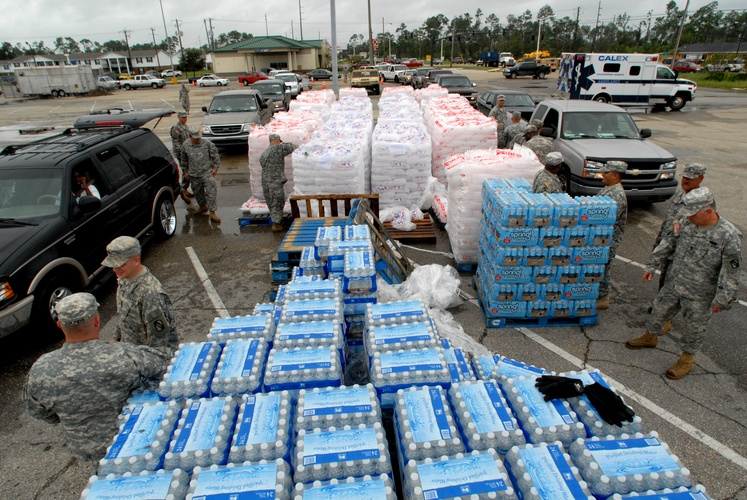Like every government and military agency, the Department of Defense (DOD) has evolved since its inception decades ago. Today, one thing stands out — the crucial role of solid support for military bases. We're not just talking about any bases; we're talking about the backbone of our defense operations. From the hustle and bustle of the Pentagon to the far-reaching outposts strategically placed around the world, success in military operations boils down to having rock-solid support systems for our bases. So, let's dig into the history, see how the DOD has taken shape over the years, and explore the different kinds of support that keep our military bases ticking — because it's these bases that stand guard over our national interests and help keep global security in check.
Whether an old airframe is on the edge of retirement or fresh off the production line, a robust logistics chain and parts supply are paramount. At Greenwood Aerospace, we take pride in our more than forty years of expert services, providing top-of-the-line government procurement, aircraft and parts storage and distribution, and military and defense contracting. Our expertise and services also include:
- Fixed-wing aircraft and associated support
- Aircraft parts & accessories
- Military aircraft parts
- Storage and distribution of parts and supplies to your organization
And this is only a sample of our services and capabilities.
Learn more about everything we offer for the defense and military industries. For additional information, you can also contact us here or by emailing us at sales@governmentprocurement.com.
Join us as we dive into base and facility support around the DOD, as we explore:
- Various forms of military bases and facilities
- Types of support contractors provide military facilities
- What Greenwood Aerospace provides our contractors
Let's dive in!
Types of Military Bases and Facilities in the U.S. and Overseas
A U.S. military installation is an intense hive of activity; anyone who has spent time around them knows what we mean. Round-the-clock operations (of key processes) are not unusual. Aircraft maintenance for flying units works non-stop to turn jets for sorties the next day. Jets roll in at midnight, requiring parts and services for an early-morning mission. But thousands of jobs are behind the scenes conducted by any number of contract support agencies. Jobs critical to a DOD installation's efficient and safe operation are either outside the scope of uniformed service or exceed the capacity. Today, we will look at some of the types of facility support that keep those miniature cities of fighting men and women in the fight, no matter what.

But first, let's zoom in on the sprawling network of U.S. military bases and facilities — they're like the unsung heroes, quietly holding down the fort both at home and abroad. In the U.S., you've got major hubs like the Pentagon, where military planning and strategy take place; it's practically the brain center of our defense operations.
Of course, along with the 450-500 military bases in the United States, the U.S. also mans over 750 bases worldwide. We're talking about bases in Europe, Asia, the Middle East — you name it. These aren't just random spots on the map; they're carefully chosen locations, each playing a specific role in our global defense strategy. Some are forward operating bases, right in the thick of things, ready to respond at a moment's notice. Others are more like support hubs, making sure our troops deployed overseas have everything they need to get the job done.
But let's not forget the everyday stuff, too. On any base, whether in the heart of the U.S. or nestled in a foreign land, you've got your mess halls, barracks, and training grounds. It's like a little city within a city, with the added twist that everyone there is part of this giant team focused on keeping things safe and sound. These bases aren't just military outposts; they're communities, buzzing with activity and camaraderie, where service members eat, sleep, train, and, well, let's be honest, probably drink a lot of coffee.
So, as we take a look at the support contractors provide these U.S. military bases, it's not just about buildings and barbed wire fences; it's about the heartbeat of our defense operations, pulsating both at home and across the oceans. It's about how these bases become symbols of American strength, resilience, and our commitment to keeping the world a little safer every day.
Types of Base/Facility Support Around the DOD
So, what kinds of support are we talking about? Well, let’s think about what it takes to keep a city going:
- Water
- Refuse
- Electricity
- Public works
- And more
But this is only a partially accurate representation of an installation. Yes, a military installation is like a small city. In fact, some, like Fort Hood, are more like medium-sized cities. But the variable is what these self-contained cities do. An Air Force Base with a flying wing may have over one hundred aircraft assigned to it, with dozens of sorties going from just after dawn and the night missions not returning until well after dusk. An Army Fort is bustling with activity all the time. A full division may have up to twenty thousand soldiers assigned, and this doesn’t consider any tenant units on the installation.
The wear and tear on an installation will always be higher because of the nature of the mission, especially where heavy tactical vehicles are concerned. But also, the community's needs are different than another city. The community is built around nearly constant levels of mobility, with the movements of troops and equipment in and out. It is a deeply complex ecosystem, and while uniformed service members run many critical services on the installation, there are always holes in the coverage because of:
- Deployments and taskings
- Professional development
- Leave
- All kinds of other reasons
Usually, base and facility support is intended to supplement missions that uniformed service members primarily handle. But other parts of the installation are handled entirely through contracts. It is important to understand that this differs from branch to branch, installation to installation.
So, what are some examples of base and facility work? It's a whole world of hustle and muscle that keeps everything ticking, from your engineers and construction crews building bases and maintaining ground support equipment to the civil servants providing necessary upkeep of facilities. Some of the other, at times, overlooked support that goes into keeping a base or facility operating at peak efficiency include:
- Snow removal
- Grass cutting and mowing
- Maintenance contracts
- Facility maintenance
- Base housing
Let's take a closer look at each, and how contractors impact these critical functions.
Snow Removal on Military Bases
Obviously, this is exclusive to states where it snows, but snow removal is a critical base support function. We have seen it executed in several ways, so let’s discuss how it may be implemented. Snow clearing and removal is a core function of the installation's civil engineering or public works directorate, depending on which branch. They are ultimately responsible for securing the manpower to do the job equipment. But sometimes, there is not enough manpower and equipment available for the level of work. Or, in some cases, the table distribution of allowances for an installation doesn’t provide for snow removal equipment; i.e., it is not to be done by civil servants at all but must be executed by contract.
A certain part of the installation (the airfield, for instance) is outside the installation's snow and ice control plan, so it needs to have contracted support, especially since hard deadlines must be met for snow removal on runways and specific equipment requirements.
Grass Cutting/Mowing (Airfields)
Airfields have specific grass standards that must be maintained throughout the growing season, which vary from location to location. Grass must be maintained between 7” and 14”, so it cannot be scalped like a golf course. Even a small airfield comprises hundreds of acres of grass that must be kept an appropriate length, but it can easily be in the thousands. If this isn’t properly accounted for and the installation does not secure equipment, it will be impossible to upkeep. A contract allows a way out for public works that are underequipped and understaffed for airfield maintenance work.
Maintenance Contracts (Aircraft)
Aircraft maintenance is a huge topic that takes time to follow. Generally speaking, tactical aircraft are maintained exclusively by uniformed service personnel, while training, VIP, and many of the ISR fleet are maintained through contract workers. But there are caveats to everything. Tactical aircraft are primarily maintained by uniformed service personnel, but that does not mean that certain things aren’t outsourced. There are thousands of contracts that are directed to perform a specific function. It may be to upgrade an APU system or to beef up a wing spar. Generally speaking, these are reserved for repairs or upgrades or functions that are outside the scope of uniformed members or beyond the capacity.

Facility Maintenance
Facility maintenance is another area where general upkeep can often be accommodated by civil servants or uniformed personnel, but large-scale projects require a facilities contract. Take a hangar roof. Measuring many thousands of square feet, these are far beyond the scope of public works to replace.
When faced with a project of this magnitude, it's time to bring in the experts, and that's where facilities contracts come into play. These contracts are essentially agreements that bring in skilled crews equipped to handle substantial projects. So, whether it's routine maintenance or these more substantial undertakings, it's a collaborative effort involving civil servants, uniformed personnel, and contracted crews, all working together to ensure the smooth operation of military bases.
Base Housing
Base or Post housing is a particularly sensitive area that is always contracted out. Even a small installation has hundreds of base houses. The only way to manage this is through a large contract. All base houses have an expected lifespan, so the contracts take that into account for proper upkeep and maintenance.
These contracts become the guiding force in ensuring that every base house, regardless of size or location, receives the attention it deserves. What makes these contracts indispensable is they aren't just about quick fixes; it's about long-term planning to guarantee that these homes remain safe, comfortable, and up to the mark for the military families who call them home. So, when it comes to base housing, it's not just about contracts; it's about creating a sense of stability and well-being for the military families who form the backbone of these communities.
In a nutshell, base and facility work isn't just a checklist of tasks; it's a concerted effort to make military operations possible. From construction crews to logistics experts, IT wizards to cooks and kitchen staff — they're the backstage crew ensuring the show goes on, day in and day out. It's a world where every wrench turn, logistic plan, and byte of data plays a role in keeping our military bases humming with efficiency.
Contact Greenwood Aerospace for Your Facility Support Needs
This list is far from a conclusive list because there are so many intricacies in the military installation. It is a giant machine with millions of moving parts; even a seemingly small one can send it wildly off-balance. Some of these are regulatory and must be followed because of issues like safety of flight. Take snow removal or grass management: if an installation is not equipped to keep up with either of these (or both), they should honestly cease flight operations.
Thankfully, GovernmentProcurement.com is the only stop you need to make for your base or facility support contracts. Give us a call today, or start a quote to see what we can do for you!
Interested in more News from Greenwood Aerospace? Check out these stories next:


.svg)


.png)


